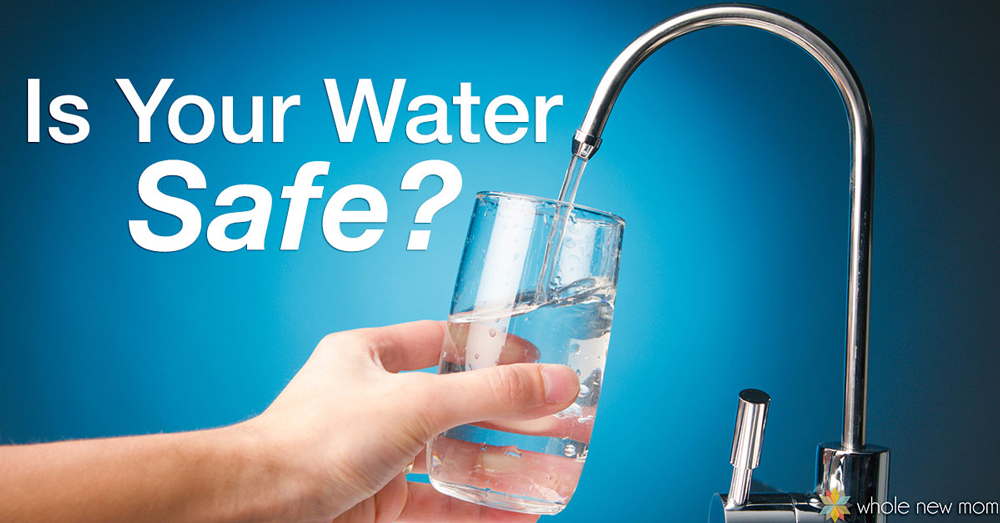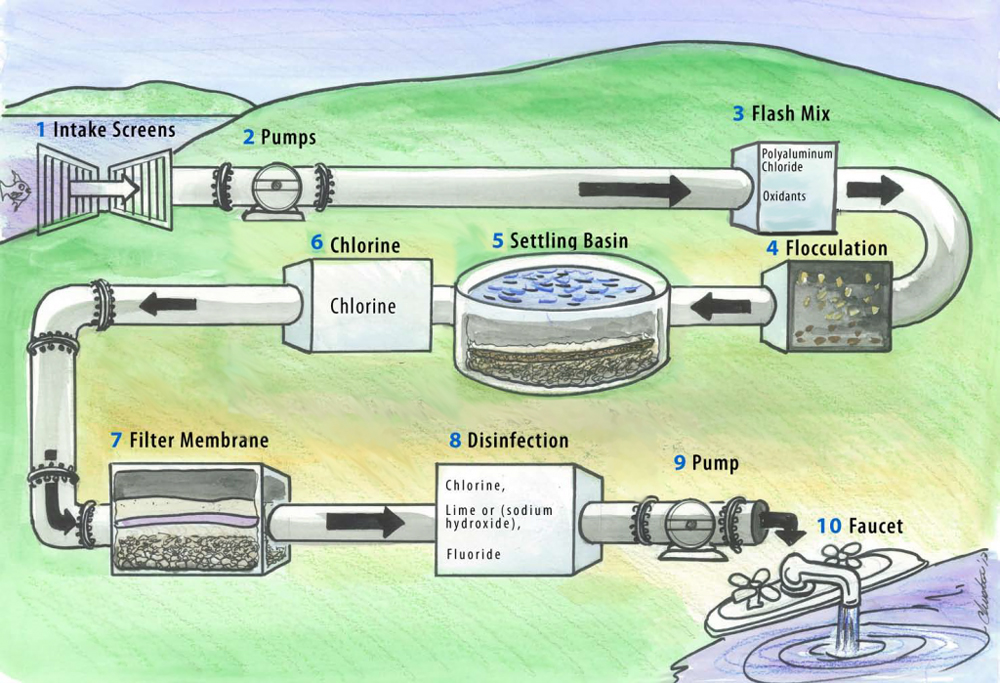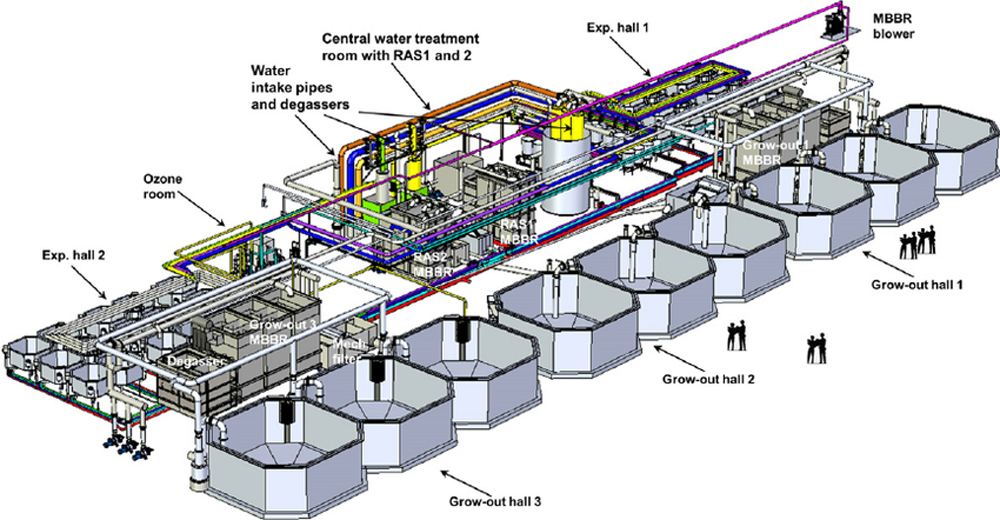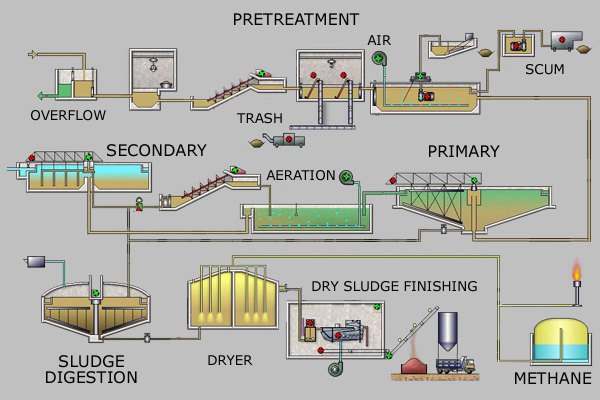The History of Water Treatment through Purifying Technology

The history of people for water treatment prior to drinking goes back farther than you might expect. As early as 2000 BC, written records in Greek and Sanskrit document water treatment recommendations.
Though much of the motivation for treatment at that time was for better-tasting drinking water, people had already developed treatment techniques. Some known examples are boiling, straining, sunlight exposure and filtration with sand, gravel and charcoal.
This is done in order to improve water quality. By 1500 BC, the use of alum to clarify water was practiced in Egypt.
Early Filtration Breakthroughs
The 1600s saw two important developments in water treatment and purification. Early experiments of desalination, or treating seawater and brackish water to remove salt, began.
Though none of the early experiments---which involved the use of sand filtration---were successful. They did begin the process of discovery of the possible process of creating safe drinking water from seawater.
Toward the end of the century, the first microscope was invented by Antonie van Leeuwenhoek. This allowed scientists to see microorganisms in water for the first time.
Chemical Disinfection
The source of an outbreak of cholera was traced to contaminated water in the 1850s. At that time, chlorine was added to the water. This was the first chemical disinfection of water.
Following the success of disinfection and filtration in managing cholera outbreaks, municipal water treatment and government regulation of water quality began. With increased use of water filtration and disinfection, waterborne illnesses became less common.
Some of the negative effects of chlorine led to treatment with other disinfectants. On the other hand, water disinfection with various agents has remained a vital part of water treatment since.
Plus, there came ways of minimizing or neutralizing the amounts of these dangerous chemicals were found. Lead pipes, for example, were replaced with pipes made from other materials.
Reasons You May Need to Purify Your Water

Though many people with reliable access to safe drinking water through water treatment may think that they will never need to know how to purify water, situations in which water might need to be purified do arise.
1. Outdoor Recreation
For those who love adventure in the great outdoors, learning how to purify water is essential. Those going on long backpacking trips often plan on purifying water from natural sources.
Even for those planning to bring enough water for the duration of their trip, knowing how to purify can prove to be a necessary skill. This becomes essential in the event that injury, illness or unforeseen weather conditions extend the duration of the excursion and the original water supply runs out.
2. Natural Disaster
Natural disasters can disrupt the supply of municipal water or damage private water treatment systems. Hurricanes, tornadoes, flooding, earthquakes and tsunamis can all lead to the disruption or contamination of water supplies.
In the unfortunate event that you are impacted by such a disaster, it may not be possible to immediately evacuate. Or to find nearby sources of water that are safe to drink.
Should you find yourself in such a situation, your odds for survival are much improved. This happens if you have prepared yourself by learning how to purify water and stocking the necessary supplies to do so.
3. Lack of Safe Municipal Drinking Water
In some areas, municipal water is not available. In those cases, alternate options, like private wells or catchment tanks, might be used. Water from these sources will need to be purified.
While the purification will likely be done largely without your active involvement, understanding how your water is purified comes important. Also, on how to maintain those systems and how to purify water in the event that a part of that system fails is very important
Infrequently, some areas that normally have access to municipal drinking water might temporarily experience conditions where their water is unsafe to drink. In the event that this occurs in your area, knowing how to purify water can help you to address this problem.
For example, your municipality may issue a statement that water should be boiled before drinking. By treating your water in this way, you can continue to have access to safe water until water quality is restored.
Those traveling in some areas may be exposed to waterborne illness against which they have little or no immunity. In this case, boiling or otherwise purifying water might be necessary to reduce the risk of illness.
5 Ways to Purify Your Water: Understanding the Water Treatment Process

There are numerous ways to do water treatment. The most appropriate way to purify water will depend on your circumstances and the cause or causes of potential contamination.
Remember to store your purified water in clean containers to avoid the risk of contaminating the water after purification.
1. Boiling
Boiling is an effective purification method for water contaminated by viruses, parasites, bacteria and other pathogens. Bringing water to a rapid boil and keeping it at a rapid boil for ten minutes will destroy most harmful organisms.
Be advised that in areas where cooking time is affected by altitude, the length of boiling time required might be longer. To help with the taste of boiled water, you can add a small amount of salt or pour water back and forth between clean containers several times.
Note that boiling is not effective as a method of removing salts, heavy metals, chemicals or dirt and particulate matter. In the event that these potential sources of contamination are also suspected, purification methods other than boiling or in addition to boiling might also be needed.
2. Ultraviolet Light Exposure
Exposure to ultraviolet light is a method of disinfecting contaminated water. There are devices that will provide ultraviolet light exposure that work quickly, some within seconds. These devices are often powered by hand cranks, but some are battery powered.
Sunlight will also work, though much more slowly. To do so, fill a clear plastic container (no larger than two liters) with water, and leave it exposed to full sunlight for one sunny day or for two overcast days. This technique is not effective if it is raining.
3. Chemical Treatment
Chemical disinfection is primarily accomplished through water purification tablets. Different tablets have their own advantages and drawbacks. Iodine, for example, works quickly.
But, it doesn't keep for as long as other options. It leaves an unpleasant taste and can be problematic for those who are pregnant, have thyroid issues or have seafood allergies.
In an emergency situation, it is possible to use bleach to disinfect water. Filter water prior to bleaching. Water that is cold or is not clear will require four drops of bleach per quart.
Water that is warm and clear needs only two drops of bleach per quart. Add the bleach, shake for one minute, flip your container upside-down and unscrew the cap just slightly so that enough water flows through to disinfect the cap and the threads.
Re-tighten the lid, wipe down the container and let it sit for thirty minutes in the shade. If the water does not smell like chlorine on opening, add two more drops, and wait another thirty minutes.
4. Filtration
Water filtration is best performed with a modern water filter rather than the older sand and gravel filtration methods. Some filters rely on pumps to move water through the filter while others make use of gravity to draw water downward through the filter.
Pump filters work more quickly, but both options are effective for removing particulate matter and larger bacteria and pathogens.
It is possible to buy filters that incorporate silver in the filtration system to kill or disable organisms that are small enough to pass through the filter. Filtration is often paired with another method, like boiling or ultraviolet light exposure, in order to provide the most effective results.
5. Distillation
Distillation is a water purification option that collects water following evaporation. Water can be turned to steam by heating, or a solar still can be used to cause evaporation.
The water collected from the condensed evaporation will be free of salts, most heavy particles, microorganisms and pathogens. Distillation can make sea water or brackish water, drinkable water. Distillation is a very effective method of water purification.
But it does require some supplies and construction. Consider building a still and practicing distillation so that you are familiar with the process before an emergency occurs.
How to Choose the Best Method to Care for Your Water and Knowing the Water Treatment Systems

With all these treatment methods for your long term water storage, it can be difficult to know which the best to choose is. Sometimes, a combination of methods is the best way to go to ensure your water is free of contaminants. Certain events are harder to prepare for.
If your water supply is in a backcountry area, methods like mechanical filters, chemical treatments, UV water treatments, or boiling will do the trick. For power outages, go with boiling, chemical treatments, mechanical filters, or UV water treatments.
With a flood, the water should be filtered, boiled, and treated with activated carbon. A distillation system is the only method to cleanse salt water. If a chemical attack or spill ever occurred, bottled water is your safest option.
Finally, for nuclear disasters, the best long term water storage treatment plan you can go with is reverse osmosis. Otherwise, a distillation system or activated carbon can work.
Best Containers for Long Term Water Storage
Plastic Bottles

You have quite a few options for choosing containers for water storage. Your first option is plastic bottles. One of the simplest ways to buy large quantities of water is to stock up on bottled water.
You could also fill plastic bottles, soda bottles, or milk jugs with tap water if you want to save on costs. Just be sure to clean out the bottles completely, particularly the lids so you can make sure bacteria does not latch on. You can even wash the bottles out with a little bleach to make them extra clean.
One downside of using plastic bottles is they gather small holes in their biodegradable exterior after months or years. If you decide on plastic bottles, the best approach is to switch them out every 6 to 18 months.
Environmental factors like heat and light could cause your bottles to degrade quicker. Also, the chemicals in plastic can sometimes seep into the water and make for an unpleasant taste. These issues are not huge, but something to consider when making your decision.
Jugs
You can purchase jugs at RV stores, camping stores, or online for your long term water storage. They cost more than plastic bottles but do not break down as plastic does.
The main con with jugs is that mold and bacteria can gather over time, so you need to rotate the water at least 1 time per year to keep your supply drinkable. If you buy water preserve drops to maintain the cleanliness of your water, you will not have to switch your supply for 5 years.
Jars
Glass jars are another good option for your long term water storage supply. They do not degrade like plastic, and you will not have to worry about any chemicals seeping into your supply. People have been known to add a couple drops of bleach into their jars to keep the water clean for longer periods.
However, it is still best to switch out your water supply in the jars about once per year. The only real downside with glass jars is that they are prone to breakage, particularly with a weather emergency like a hurricane or earthquake.
Ideal Storage Locations
Once you have decided which storage container you wish to use for your long term water storage supply, you need to determine where you will store your water. Environmental elements like moisture, heat, and light can be a problem, although not as much as with long term food storage.
Pick a storage location easy to get to in the case of an emergency. You might not want to store water in a location that could freeze, such as a cold garage in the wintertime. Water expands at freezing temperatures, so your storage containers could break in these conditions.
If you use plastic bottles, heat will degrade the plastic more quickly. If you keep your water supply in plastic bottles in areas like the attic or garage, you will need to switch them out more often.
Water Treatment Systems and Understanding the Danger of Contaminated Water
To examine the danger of contaminated water and the importance of water storage further, we will delve into some water-induced illnesses that could occur in case of an emergency. Again, this is not meant to scare you.
Rather, it helps you assess the threat of dirty water and understand the best way to format your personal long term water storage plan. If water treatment facilities cease functioning during an emergency event, such as widespread flooding, bacteria can contaminate drinking water in no time flat.
Bacteria are drawn to water like flies to honey and can even grow in clean water if it stands for too long. Bacteria are large and can be strained out with filters. They can also be eliminated with boiling and chemical treatments, which we will examine later.
Fine Bubble Diffuser
These produce small bubbles of air which slowly rises from the treatment of wastewater plant. This also provides as a sewage tank for aeration plant treatment. In fact, fine bubble diffusers provides a very source and efficient of oxygen transferring to the water.
Bacterial infections that occur in water include things like Campylobacter, Shigella, E. coli, and Legionella. While protozoa and parasites are not the first invaders you think of with contaminated water, they are very dangerous like bacteria.
MBBR & MBBR Media
As part of the water treatment process and water treatment systems, the MBBR (Moving Bed Biofilm Reactor) comes as a highly effective process for biological treatment. It comes from a conventional process and media which is brought by conventional activation of sludge among the tanks for aeration and anoxic.
The mbbr media now comes to the surface and increases where the microorganisms attach themselves and then grow. It also reduces tank footprints for wastewater treatment. It comes aerobic or may also be anaerobic which operates from high loads.
K1 Media
In water treatment facilities, the K1 media is used for massive amounts of water which delivers good results. The bacteria which is a beneficial one surfaces and increases in amount. Then, the K1 media becomes efficient through knocking and rubbing of each media against each other.
Tube Settlers
These materials offer one of the best methods for an upgraded water treatment process and water treatment systems. It improves performance through clarification and sedimentation of the water basis. It also reduces the footprint and tanks for new installs.
With regards to the flow of the water treatment plant, it can actually increase through adding tube settlers. The allowable capacity of the water flow then expands and settles to increase the removal rate for the tanks itself.
The Short Answer to How Much Water You Need
It is astounding to consider that less than 50 percent of Americans have a mere 3-day store of food and water for emergency situations. It is a fact that you can only survive for up to 3 days if you do not have water, and thirst can drain you long before the 3-day mark.
The recommended amount of water you should have for your long term storage is a minimum of 1 gallon per person for each day of your plan. How many gallons of water you store depends on however many days you'd like to have water for.
Estimating Your Daily Water Needs
After you have determined how much water you need for each day, you need to know how many days of water you want for long term water storage. Entities like the Red Cross and FEMA advice having enough water for at least 2 weeks, while Ready.gov says 3 days is the minimum amount.
To be safe, 30 days is the ideal amount you should have in your long term water storage supply. This way, you have plenty for drinking, cleaning, cooking, and any other needs that may arise. It's better to have more than you need than not enough.
Conclusion
Many people will never need to do water treatment; however, knowing how to purify water is a valuable skill. It is possible to find yourself without access to purified water sources.
The main reason for this is that it is because you are in a location where safe municipal drinking water is not provided, your municipal drinking water supply has been disrupted or contaminated or a natural disaster strikes.
In order to protect your health and the health of those in your household, learning basic water purification techniques and having the supplies necessary to do so is strongly recommended.
Setting a plan in place for your long term water storage does not happen overnight. You need to start by deciding how much water you will need and slowly increase your inventory until you have water stored up for at least 30 days. Identify which treatment method you will use, and be sure to rotate your water periodically to ensure it is clean and free of contaminants.







